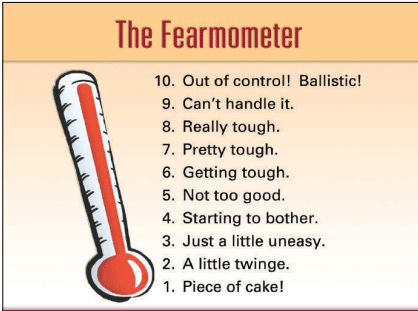EXPOSURE THERAPY is a type of therapy often associated with Cognitive Behavioural Therapy (CBT). Exposure Therapy is used to help people decrease or overcome the overwhelming thoughts, feelings and sensations that happen to them when they are “triggered”.
TRIGGERS
A trigger is something that creates or “triggers” an overwhelming response in you. Triggers are often unique to each person.
WHAT I USE EXPOSURE THERAPY TO HELP
I use Exposure Therapy to help people with: Social Anxiety, Generalised Anxiety Disorder (GAD), Fears and Avoidance, Specific Phobias, Panic Disorder, and Obsessive Compulsive Disorder (OCD).
As needed, I use Imaginal Exposure, Interoceptive Exposure and In Vivo Exposure Therapy – meaning, clients gradually expose themselves to the things that they are fearful of. I also believe in the benefits of Progressive Exposure also known as Systematic Desensitization as a gentle approach to exposure.

STEPS WE DO TOGETHER
- Psycho-education around the brain and fear.
- Becoming more aware of your triggers.
- Becoming more aware of the thoughts that accompany those triggers.
- Becoming more aware of the actions that accompany those triggers.
- Enhancing your coping methods – various tips, tools, and techniques, to calm, breathe and tolerate distress in both your body and mind.
- Discuss how people you live with or you are close to might be hindering or helping your progress (without knowing it). We can then involve (or not) this person as a Supporter in your process – a parent, sibling, friend, partner or workmate. There are things Supporters should avoid and things they can do to help.
- Learn to use a “Distress Thermometer” to gauge distress level.
- Prepare a “fear ladder”. Together we outline a stepped plan for exposure therapy starting with something fairly easy and working up to the hardest fear or phobia. Often the first step is Imaginal Exposure – or thinking about a distressing trigger. We only move to a harder level once you are coping with the current level.
- Reinforce coping skills, and create rewards for pushing through each level until you achieve your goal.
- Once you have tamed or conquered your most difficult fear, we discuss a maintenance plan and self-care.
